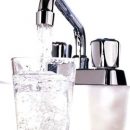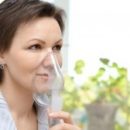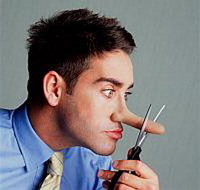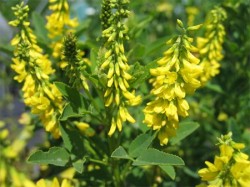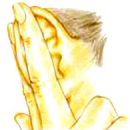Bronchoscopy General Information
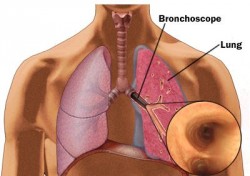
The bronchoscopy doctors call the method that allows you to examine the mucous membranes of the tracheosobronchial tree with the help of the bronchoscope (it consists of trachea and numerous bronchi). The name of the term received from the connection of two Greek words translated as «windpipe» and «Consider». The device bronchoscope is introduced into the respiratory tract through the larynx. Modern bronchoscopes are a tube (its diameter from 3 to 6 mm, and a length of about 60 cm), equipped with a video camera and a lighting device. The accuracy of this study is now 97%. To use a device for medicinal purposes, it is additionally equipped with a set of surgical instruments (mechanical and electric), biopsy forceps, laser equipment.
History says that the first bronchoscopic examination of the bronchi was held back in 1897. Then this manipulation was traumatic and very painful, so cocaine was used to the anesthesia. The first safe hard (it is called a rigid) the device was created in 1956. But the first flexible fibrobronchoscope invented in 1968. After 10 years, thanks to the development of electronic technologies, specialists have the opportunity to increase the image ten times and see the changes in the lungs. Now it is possible to keep an enlarged record. Using the printer, the image on the monitor can be printed. In addition to the diagnosis, the bronchoscope allows for therapeutic procedures:
- Clean bronons from mucus and pus.
- Rinse the bronchial tree to enter solutions there Antibiotics, Mukolithics, nitrofuran and glucocorticosteroids.
- Delete foreign bodies in broncht (most often it happens in children).
- Expand the lumen of bronchi and trachea.
- Fight bleeding.
- Look for foci lesion respiratory system.
- Take tissue samples for biopsy.
- Get wet or wash with bronchi to determine the pathogen Tuberculosis.
- Delete small tumors, scars, wet clots.
Indications for bronchoscopy
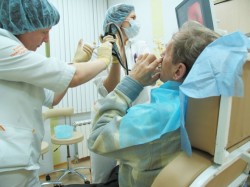
Before bronchoscopy, the patient passes:
- X-ray lungs - the picture taken will help the doctor to understand which areas of the bronchial tree in the lungs should be carefully studied during bronchoscopy;
- Electrocardiography (ECG) - to identify whether there is a risk of complications from the heart muscle;
- general blood analysis;
- Blood test for consumption (coagulogram);
- determination of the level of gases, which is dissolved in the blood (this carbon dioxide, oxygen, nitrogen);
- Determination of blood urea.
During the preliminary conversation, the patient must provide a doctor about chronic diseases (such as diabetes, heart failure), warn about allergies for some drugs. You must also tell what medicines you take (anticoagulants, hormones, antidepressants). Doctor will warn what medications can be used, and let it be worth it. Perhaps for removing anxiety, the doctor will register in the evening before the day of the procedure, the reception of the elenium, schuuxen or a sleeping bag. The last meal is allowed to make the day before, which is assigned bronchoscopy, until 21 hours. The procedure is conducted on an empty stomach, it is necessary to refrain from the use of water. On the day of study, smoking is prohibited. Before the procedure you need to visit the toilet to empty the bladder. It is necessary to take a towel to the procedure, sometimes short-term hemopling happens. Suffering bronchial asthma with you have to have an inhaler. To reduce the patient's concern, immediately before the procedure, he can enter some calming agent.
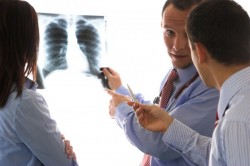
This study is carried out in a special endoscopic office equipped with everything necessary. There are also the same conditions regarding sterility, as in the operating unit. Manages the endoscopist survey, which has passed the necessary training for the study of bronchi. The doctor will say to the patient, what kind of pose to him - lying on his back or sitting. It is impossible to pull his head forward and bending your chest, then the device will not be injured by the bronchial mucosa. Pre-patient introduced Eufillin, Atropine sulfate, Salbutamol aerosol. All this is necessary to expand bronchi, so that the bronchoscope is freely moving around the respiratory tract. If the use of flexible bronchoscope is planned, the anesthesia will be local (usually 2-5% lidocaine). Nemeth ends, a small nasal congestion is felt, as if a lump in the throat, there are difficulties in swallowing. When using a hard bronchoscope requires general anesthesia. It is resorted to the examination in children or persons with an unstable psyche (for them is characterized - insurmountable fear, anxiety). With the help of medicines, the patient is introduced into a state of sleep, he does not feel anything. In order not to work a vomit reflex, breathe when entering the bronchoscope, it is recommended often and superficially. The introduction of the device is carried out through the nostril or mouth. With a deep breath, the tube is conducted through a voice slot, then rotational movements produce the tube to bronchi. Patient should not be afraid that it hurts his breathing, because the tube is much thinner than the lumen of the bronchi. Pain will not, possibly only a sensation of pressure in various areas of the respiratory system. First, the larynx is inspected, the voice gap, then go to the study of trachea and bronchi. It is impossible to study thin bronchiols and alveolar apparatus, because it does not allow them to make their small diameter. If necessary, an endoscopist for a given survey is washed with bronchi drug makeup, removes their contents, takes off for further study of the wash, repents off pieces of fabrics for research in the laboratory. Making everything planned, the specialist removes the bronchoscope.
After such a procedure for 30-60 minutes, the patient still has a feeling of numbness. Over the next two hours, it is not recommended to eat food, smoking. To avoid complications, a patient must be in hospital for some time, where medical personnel will observe. If the patient was introduced sedatives, then he cannot be controlled by a car for eight hours.

Complications after bronchoscopy are currently rarely. And yet, our website warns that it is necessary to pay for medical help in a timely manner if the following signs of disadvantage are found after the procedure:
- chest pain;
- long-term hemopling;
- strange, unusual wheezes;
- Increase temperature, chills;
- nausea, vomit.
Currently, physicians have the opportunity to carry out virtual bronchoscopy - the X-ray method, it can be said that this is a computed tomography of a bronchial tree, the result of which is transformed in a certain way. Everything is carried out using tomographic sections and a special computer program, as a result of which the three-dimensional picture of the bronchial tree is reconstructed. Penetration into the body is not required. Such bronchoscopy has many advantages. But it is shown only for diagnostic purposes, since no surgical manipulations cannot be performed when implementing it.

